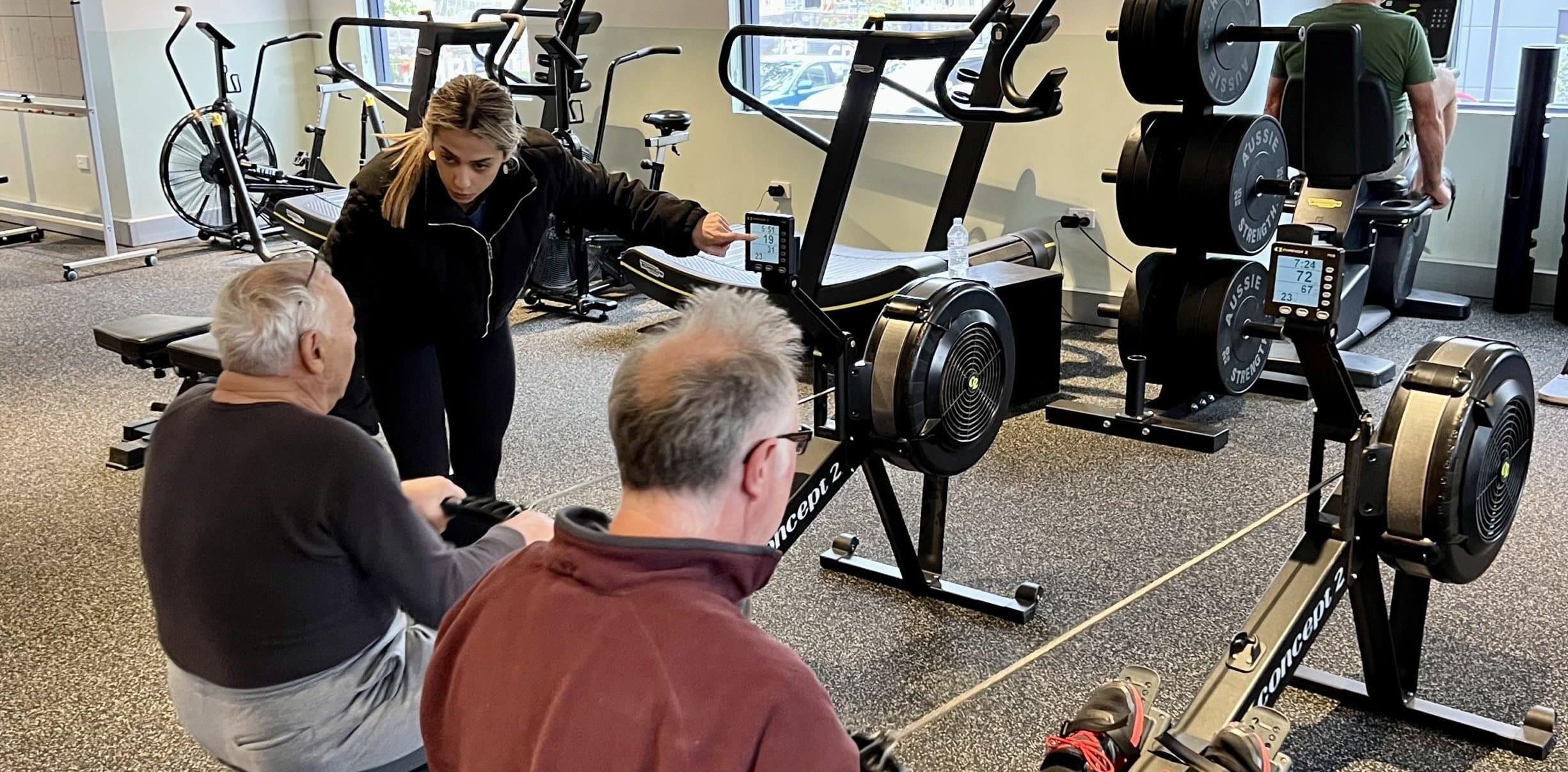Coronary Heart Disease is a leading cause of death in Australia.
Coronary Heart Disease is a leading cause of death in Australia. Whilst it’s not possible to remove some risk factors such as genetics, family history or age, there are ways you can improve your heart health and enhance recovery from Coronary Artery Disease (CAD).
Research has shown that gradually building up a regular exercise routine to improve cardiovascular fitness, along with a healthy, balanced diet can have many positive effects.
The right exercise may also accelerate recovery times from cardiac events or surgery.
The Brellah Cardiac Health Program is led by an Exercise Physiologist and offers customised exercise and education in a supportive group setting for both prevention and recovery from illness.
Olivia Adoncello, Exercise Physiologist shares the Brellah Cardiac Health Program experience here:
Who are the participants attending these classes?
Our class sizes range from 2 to 5 people, with males and females aged in their 40s through to their 80s.
Typically our participants are seeking rehab from heart failure, CAD, acute coronary syndrome and myocardial infarctions.
We also have participants with high blood pressure seeking to improve their heart health.
Who is this program designed for?
- Anyone who has had a cardiac event such as a heart attack, angina, heart failure, coronary artery disease
- People who have had cardiac surgery such as a bypass, stents, heart transplants, valvular replacements or repairs
- People with an implantable device including a pacemaker or defibrillator.
What objectives does this program aim to achieve?
Our classes are designed to help you to:
- Improve your aerobic capacity
- Become better educated and more informed about your condition and treatment
- Achieve behavioural change outcomes such as appropriate lifestyle changes
- Improve your strength and muscular endurance
- Make exercise FUN and not a chore.
What kind of exercises are performed in these programs?
We do a combination of cardio, mobility, strength, coordination and balance exercises.
The level of cardio intensity is based on each person’s individual response to exercise.
We start off at a steady state, and progress to small intervals of 30 secs of work followed by 60 secs rest – and then eventually progress to a higher work/rest ratio such as 40 secs work and 20 secs rest.
With regards to strength and mobility, we start with basic movements such as sit to stands – and work to improve general mobility during this time.
From here, we look at improving functional ability and try to progress to more complex movement patterns such as squatting.
What are some great exercises to help enhance heart health?
- General cardio exercises such as walking, swimming or cycling
- Stairs are really great as they offer a good combination of muscular and aerobic endurance
- Exercises that use the major muscle groups such as full body or compound strengthening exercises.
What exercises (or intensity) should be avoided if you have cardiac health issues?
- Any exercise that requires you to hold your breath – we call this the valsalva manoeuvre
- It depends on the cardiac issue you have – if you have had heart failure we avoid high/vigorous intensity
- Predominantly we stay in the moderate intensity zone as this actually provides more cardiac fitness benefits than high intensity. Interval training is great as it gives an opportunity for the heart to recover between each set.
What precautions should cardiac patients take into account when exercising?
Beta blocker medication slows the heart rate down, so in this instance it’s not ideal to use the heart rate as an intensity measure.
I educate my patients to effectively use an RPE scale (Rating of Perceived Exertion) as this gives me a better gauge of how they’re coping and how to progress or regress the training from there.
Before each class I measure each participant’s resting blood pressure, O2 saturation levels and heart rate to make sure participants are okay to begin exercise.
Thereafter all patients know to communicate with me throughout so the exercises can be modified if necessary.
For post-surgical patients we need to place some restrictions on the level of weight used in strength building exercises.
Physical limitations of acute pain/mobility limitations post surgery are also considered.
What are some of the outcomes that have made you proud?
Many of my current participants have continued beyond their initial 8-week program. They came from doing very little exercise to now doing bi-weekly classes with more exercise completed between their sessions here at Brellah.
I’ve found it so rewarding to have been able to change their lifestyle behaviours and improve their education and motivation to the point where they continue these great new habits outside of my classes.
They’ve become friends and enjoy the social and community aspect – and they hold each other accountable.
We work, we focus on our breathing, we move our bodies, hear each others’ stories and laugh alot!
We celebrate each others’ successes and the great sense of achievement that comes from doing awesome things with the body that were not previously thought possible.
It’s so rewarding getting to know my patients and to see their health and quality of life improve.
The Brellah Cardiac Health Program runs every WEDNESDAY AND FRIDAY at 10am.
This article is for information purposes only. It does not constitute medical advice, is general in nature, not tailored to your personal circumstances and you should seek your own medical advice from an independent medical professional with regards to what options are best for you.
